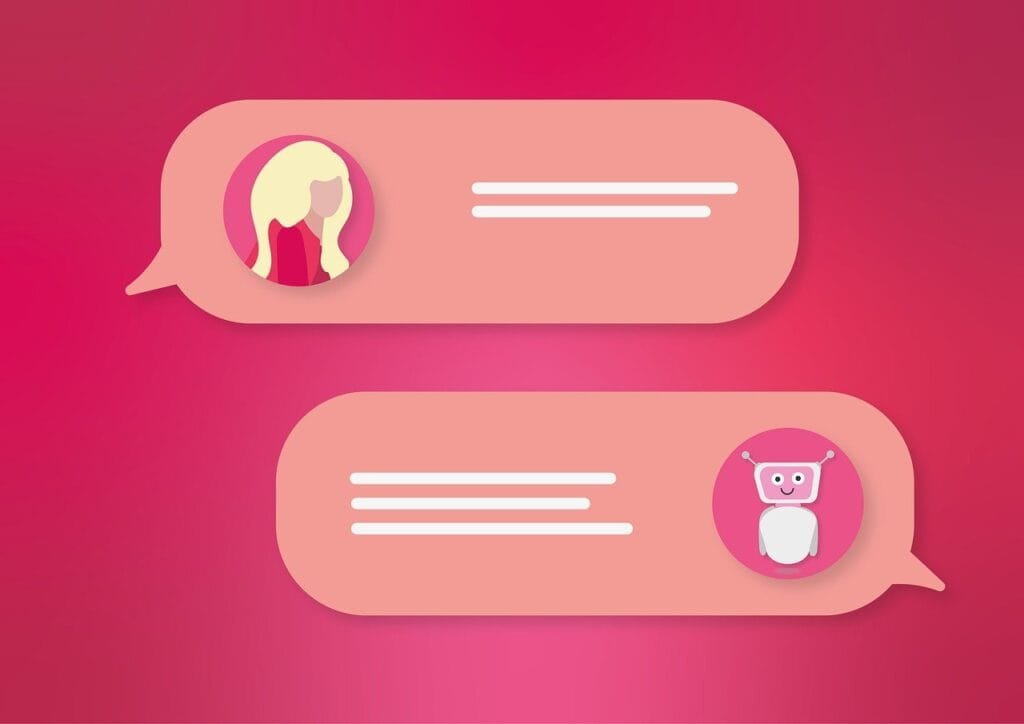This Article has been revised, edited and added to, by Poulomi Chakraborty.
- Comparing Chatbots with Traditional Customer Service
- Immediate Response vs. Delayed Feedback
- Personalization at Scale
- Availability and Accessibility
- Cost Efficiency
- Enhancing User Engagement
- Optimal Integration Points for Chatbots
- Customization and Brand Alignment
- Scalability and Flexibility
- Proactive Customer Engagement
- Gathering and Utilizing Customer Feedback
- Continuous Learning and Adaptation
- Integrating Chatbots into Various Digital Marketing Strategies
- Content Delivery and Interaction
- Enhancing Social Media Presence
- Revolutionizing Email Marketing
- Streamlining Customer Onboarding
- Collecting Data and Feedback
- Enhancing Lead Generation with Chatbots
- Integrating Chatbots with CRM Systems
- Automating Content Marketing
- Optimizing Chatbots for Mobile Marketing
- Leveraging Chatbots for Event Marketing
- Leveraging Chatbots for SEO and User Experience Optimization
- Transforming Advertising Strategies with Chatbots
- Industry-Specific Applications of Chatbots in Digital Marketing
- Healthcare: Appointment Scheduling and Patient Education
- Finance: Customer Support and Financial Advice
- Retail: Enhancing Shopping Experiences and Personalization
- Travel and Hospitality: Booking Assistance and Local Recommendations
- Real Estate: Property Showcases and Scheduling Visits
- Education: Course Guidance and Administrative Support
- Future Developments and Innovations in Chatbot Technology
- Conclusion
In today’s fast-paced digital landscape, chatbots have emerged as invaluable tools for boosting user engagement and streamlining marketing strategies. These AI-powered assistants are not just about answering queries—they’re reshaping how brands connect with their audiences, making interactions quicker, more personalized, and significantly more effective. In this article, we’ll dive deep into how chatbots are transforming digital marketing and why they could be your next big strategic move.
Comparing Chatbots with Traditional Customer Service

Imagine you’re browsing a website late at night, interested in purchasing a new gadget, but you have a couple of questions. Traditionally, you might send an email or leave a message through a contact form and await a response, which could take anywhere from a few hours to a couple of business days. This delay in communication can dampen your initial enthusiasm and even lead you to abandon the purchase altogether.
Enter chatbots—digital marvels that can engage with you instantly, no matter the time of day. This comparison between traditional customer service methods and modern chatbot solutions highlights a significant shift in digital marketing strategies focused on enhancing user engagement.
Immediate Response vs. Delayed Feedback
The primary advantage of chatbots lies in their ability to provide immediate responses. Where traditional customer service fails to deliver instant feedback, chatbots excel, offering answers in real-time. This immediacy can be crucial in retaining customer interest and can significantly lower bounce rates on digital platforms.
Personalization at Scale
Another critical comparison point is personalization. Traditional customer service methods often struggle to maintain a personalized experience when dealing with large volumes of inquiries. Chatbots, however, powered by AI and machine learning algorithms, can analyze user data and previous interactions to offer personalized responses. This capability not only enhances the user experience but also builds a deeper connection between the brand and its customers.
Availability and Accessibility
Customer service teams have limits; they work in shifts and can sometimes be overwhelmed by high query volumes, leading to longer response times. Chatbots, however, are not bound by human limitations. They are available 24/7, ensuring that the brand is always ready to engage, which is particularly beneficial in a global market where customers across different time zones are looking to interact at their convenience.
Cost Efficiency
Deploying chatbots can also be more cost-effective than maintaining large customer service teams. They can handle an exponentially larger number of interactions at once, which reduces the need for a sizable human workforce. This scalability can lead to significant savings and a better allocation of resources towards other critical areas of digital marketing.
Enhancing User Engagement
Lastly, chatbots can enhance user engagement by introducing interactive elements, such as quizzes, polls, and personalized recommendations. These features can make interactions more enjoyable and engaging for users, encouraging them to spend more time with the brand.
Optimal Integration Points for Chatbots
Startups must identify the most impactful points within their customer service processes where chatbots can be introduced. An effective strategy involves deploying chatbots at initial customer touchpoints to handle common inquiries and basic information requests. This approach allows human agents to focus on more complex issues, thus optimizing resource allocation. Startups can analyze their customer interaction data to pinpoint frequent questions and service bottlenecks that chatbots can swiftly address, enhancing overall efficiency and customer satisfaction.
Customization and Brand Alignment
For startups, establishing a brand identity and maintaining consistency across all customer interactions is crucial. Customizing chatbot dialogs to reflect the brand’s voice and ethos is not just about programming responses but also about embodying the brand’s values in every interaction. This customization extends to the tone, language, and even the humor the chatbot uses, making the interactions feel more personal and less automated. Ensuring that the chatbot provides responses that are not only helpful but also aligned with the brand can create a seamless and engaging customer experience.
Scalability and Flexibility
As startups grow, their customer service needs will evolve. Designing chatbots with scalability in mind is essential. Utilizing cloud-based chatbot services can provide the flexibility needed to scale up as customer volume increases without necessitating significant upfront investment in infrastructure. Additionally, these platforms often offer sophisticated AI and learning capabilities, allowing the chatbot to improve over time as it interacts with more customers.
Proactive Customer Engagement
Beyond reacting to customer queries, proactive engagement can set a startup apart from its competitors. Chatbots can be programmed to initiate conversations based on certain user behaviors or engagement patterns observed on the website. For instance, if a visitor has been browsing a specific product page for a while, the chatbot can pop up to offer additional details, a discount, or direct assistance in making a purchase decision. This proactive approach not only enhances user engagement but also helps in converting passive browsers into active customers.
Gathering and Utilizing Customer Feedback
Feedback is invaluable, especially for startups that are continuously refining their products and services. Chatbots can be an effective tool for collecting immediate feedback during or after customer interactions. This feedback can be instrumental in understanding customer needs and satisfaction levels. More importantly, leveraging this data to refine products, services, and even the chatbot’s own responses is crucial for continuous improvement and customer satisfaction enhancement.
Continuous Learning and Adaptation
Investing in AI-driven chatbots that possess machine learning capabilities can greatly benefit a startup. Such chatbots get better over time, learning from each interaction to refine their responses and become more attuned to customers’ needs and preferences. Incorporating regular reviews and updates based on performance analytics can ensure that the chatbot remains effective and relevant as market conditions and customer expectations change.
In comparing chatbots with traditional customer service, it’s clear that chatbots offer distinct advantages that can transform digital marketing strategies. They not only provide immediate, personalized, and accessible customer service but also do so at a lower cost and with greater capability to engage users.
Integrating Chatbots into Various Digital Marketing Strategies

As we delve deeper into the utility of chatbots within the digital marketing realm, it’s evident that these tools can be seamlessly integrated into almost every aspect of a marketing strategy. This section explores how chatbots are revolutionizing content delivery, social media engagement, and email marketing campaigns.
Content Delivery and Interaction
In the digital age, content is king—but not just any content. Engaging, interactive content that captures and retains consumer attention is paramount. Chatbots are redefining how content is delivered to users. By integrating chatbots into your website or app, you can create a dynamic content delivery system. Chatbots can suggest articles, videos, and other resources based on the user’s browsing behavior and past interactions. For instance, if a user spends time reading about beginner yoga poses, a chatbot can offer them a guide on meditation techniques or yoga mats, thereby not only maintaining engagement but also gently guiding them down the sales funnel.
Enhancing Social Media Presence
Social media is a critical battleground for customer attention, and chatbots are becoming indispensable tools for enhancing social media strategies. By integrating chatbots with social media platforms, businesses can automate responses to frequently asked questions, engage users by conducting real-time polls, or even handle booking requests directly through platforms like Facebook Messenger. This immediate interaction boosts user engagement and helps maintain a strong, interactive social media presence that feels personal and responsive.
Revolutionizing Email Marketing
Email marketing remains a cornerstone of digital marketing due to its direct approach and proven effectiveness. However, integrating chatbots can take email campaigns to the next level. For example, chatbots can initiate follow-up emails based on customer interactions on the website, ensuring that the content of the email is tailored to the user’s preferences and recent activities. This personalized approach means that users receive emails that are relevant, timely, and highly actionable, which significantly increases the likelihood of engagement and conversion.
Streamlining Customer Onboarding
The onboarding process is crucial as it sets the tone for the customer’s relationship with the brand. Chatbots simplify and streamline customer onboarding by guiding new users through processes, answering common queries, and providing useful tips and tools. This not only makes the process more efficient but also builds a positive first impression and enhances user satisfaction.
Collecting Data and Feedback
An often overlooked but critical function of chatbots is their ability to collect data and feedback continuously. Every interaction with a user can be tracked and analyzed to gain insights into user behavior and preferences. Furthermore, chatbots can be programmed to ask specific questions that help gather feedback on products, services, or overall customer satisfaction, thereby providing valuable insights that can drive strategic business decisions.
Enhancing Lead Generation with Chatbots
Chatbots are not just tools for answering customer queries but can also be powerful in generating and qualifying leads. Startups can deploy chatbots on their websites and social media pages to interact with potential customers, gather contact information, and understand their needs through natural conversation flows. By designing chatbots to ask relevant questions related to the users’ interests and problems, startups can effectively segment and nurture these leads in a personalized way. This direct interaction not only speeds up the qualification process but also builds a rapport with potential customers, increasing the likelihood of conversion.
Integrating Chatbots with CRM Systems
To maximize the effectiveness of chatbots in digital marketing, integrating them with customer relationship management (CRM) systems is essential. This integration allows chatbots to access and record valuable customer data directly into the CRM, providing a unified view of customer interactions across different channels. For startups, this means that every interaction through the chatbot can enrich customer profiles, which can be used to tailor marketing messages, predict customer needs, and drive sales more effectively. Moreover, this data can help startups understand customer behavior patterns and refine their marketing strategies accordingly.
Automating Content Marketing
Chatbots can also play a pivotal role in automating and personalizing content marketing efforts. By analyzing the questions and interactions users have with the chatbot, startups can identify common concerns and interests. This insight allows them to create or recommend content that addresses these specific issues, ensuring higher engagement rates. For instance, if a significant number of users ask about how to use a product, the startup could create tutorial videos or blog posts and use the chatbot to distribute this content proactively.
Optimizing Chatbots for Mobile Marketing
With the increasing prevalence of mobile usage, optimizing chatbots for mobile users is crucial. Startups should ensure that their chatbots are fully functional and optimized for mobile devices, providing a seamless interaction experience. This means faster response times, concise and clear messages, and easy-to-navigate chat interfaces. Mobile-optimized chatbots can engage users who are on the go, making it easier to capture their attention and interact with them in real-time, which is critical for effective mobile marketing.
Leveraging Chatbots for Event Marketing
Startups often participate in or conduct events as part of their marketing strategy. Chatbots can be utilized to enhance event marketing efforts by managing registrations, sending reminders, providing event information, and engaging attendees through interactive elements during the event. Post-event, chatbots can be used to collect feedback, follow up with leads, and maintain engagement, ensuring that the momentum from the event is not lost.
By strategically enhancing these aspects of digital marketing with chatbots, startups can not only improve efficiency and customer engagement but also gain deeper insights into customer preferences and behaviors, driving better marketing outcomes. With their ability to personalize interactions at scale, chatbots offer a cost-effective solution for startups to compete effectively in their markets.
Leveraging Chatbots for SEO and User Experience Optimization

Beyond direct interaction with customers, chatbots also play a pivotal role in enhancing search engine optimization (SEO) and improving the overall user experience (UX). This section explores how integrating chatbots can positively impact a website’s visibility and user engagement metrics, crucial factors in digital marketing success.
Boosting SEO through Enhanced User Engagement
Search engines like Google place a high premium on user engagement when ranking websites. Metrics such as time on site, bounce rate, and page views per session are critical indicators of how valuable users find a website. Chatbots contribute significantly to improving these metrics by keeping users engaged longer. For instance, a chatbot can decrease bounce rates by immediately engaging visitors and encouraging them to interact more deeply with the site through conversational interfaces and relevant content suggestions.
Improving User Experience and Site Navigation
A positive user experience is vital for keeping visitors on your site and encouraging them to return. Chatbots enhance UX by providing instant assistance. If a visitor is having trouble finding information or navigating the site, a chatbot can jump in to guide them, effectively reducing frustration and potential site abandonment. This support not only helps in retaining the user but also makes their journey through the site smoother and more enjoyable, which can translate into higher conversion rates.
Personalizing User Interactions
Personalization is a key trend in digital marketing, with consumers increasingly expecting experiences tailored to their preferences and behaviors. Chatbots analyze user interactions and data to deliver personalized messages and content recommendations. This bespoke approach makes users feel valued and understood, which enhances their relationship with the brand and increases the likelihood of conversion.
Facilitating Content Discovery
A major challenge for content-heavy sites is ensuring that users can discover and access content relevant to them. Chatbots can act as dynamic search tools that help users find the content they seek by asking intuitive questions and analyzing past interaction data. This capability not only improves content visibility but also ensures that your site’s value is fully accessible to users, thereby boosting the chances of engagement and sharing.
Enhancing E-commerce Conversions
For e-commerce sites, chatbots can dramatically enhance the shopping experience. They can assist with product searches, provide recommendations based on user preferences and past purchases, and even handle transactions directly through conversational interfaces. This seamless integration of browsing and purchasing can significantly boost conversion rates and average order values.
Integrating chatbots into your SEO and UX strategies is not just about keeping up with trends; it’s about actively improving the core metrics that search engines and users care about. By enhancing user engagement, personalizing interactions, and streamlining navigation and transactions, chatbots deliver a competitive edge in the crowded digital marketplace.
Transforming Advertising Strategies with Chatbots

Chatbots are not only revolutionizing customer service and content delivery but are also becoming integral to innovative advertising strategies in the digital realm. This section examines how chatbots are reshaping the advertising landscape, from personalized ad campaigns to interactive ad formats, offering businesses new ways to engage and convert their target audiences.
Personalizing Ad Campaigns
One of the most significant impacts of chatbots in advertising is their ability to personalize ad content in real-time. Traditional digital advertising often relies on static ads that target broad audience segments. Chatbots, however, can interact with users directly and gather personal preferences, behavioral data, and feedback during these interactions. This information enables marketers to tailor ads specifically to individual needs and interests, making them far more effective. For example, a chatbot can suggest products similar to what users are looking for or have shown interest in, thereby increasing the relevance and effectiveness of ads.
Interactive Advertising
Chatbots introduce a level of interactivity to ads that was previously hard to achieve. Interactive ads powered by chatbots can engage users in conversations, quizzes, or games related to the product being advertised. This engagement not only makes the ad more memorable but also increases the likelihood of conversion. For instance, a chatbot could guide a potential customer through a series of questions to determine the best type of running shoe for them, leading directly to a product recommendation within the ad.
Enhancing Customer Retargeting Efforts
Retargeting is a crucial advertising strategy where brands aim to re-engage users who have visited their website or shown interest in their products but did not make a purchase. Chatbots enhance retargeting efforts by engaging these users through personalized messaging based on their previous interactions. This could include offering special discounts, reminding them about products they viewed, or providing additional information about the products to alleviate concerns.
Optimizing Ad Spend
Chatbots can also help optimize ad spend by improving the targeting and timing of ads. By analyzing the data collected from interactions, chatbots can determine the most effective times and contexts to display ads to users. This targeted approach ensures that ads are not only more relevant but also more cost-effective, as they are more likely to result in conversions.
Scaling Ad Operations
Finally, chatbots allow businesses to scale their advertising efforts efficiently. Traditional advertising can require significant human effort in terms of design, placement, and adjustment based on performance. Chatbots automate many of these processes, from interacting with users to optimizing campaigns based on real-time data. This automation allows businesses to manage larger, more complex ad campaigns with less effort, reducing overhead costs and increasing the potential for growth.
Incorporating chatbots into advertising strategies represents a shift towards more dynamic, responsive, and personalized advertising. This shift not only enhances the effectiveness of ads but also improves user engagement, making advertising a more interactive and enjoyable experience for consumers.

Related: Check out our free SEO suite

Industry-Specific Applications of Chatbots in Digital Marketing
Chatbots have found a unique niche in various industries, each adapting the technology to suit specific needs and challenges. This section explores how different sectors leverage chatbots to enhance customer interactions, streamline processes, and improve marketing outcomes.
Healthcare: Appointment Scheduling and Patient Education
In the healthcare industry, chatbots are transforming patient engagement and administrative efficiency. They are commonly used for scheduling appointments, sending reminders for upcoming visits or medication intakes, and providing basic patient education. For example, a chatbot might help patients understand postoperative care procedures or answer FAQs about common medical conditions. This not only saves time for healthcare professionals but also enhances patient care by providing instant assistance and information.
Finance: Customer Support and Financial Advice
The finance sector has embraced chatbots to handle customer service inquiries and provide financial advice. Banks and financial institutions use chatbots to answer queries about account details, transaction statuses, and product information. Some advanced chatbots are equipped to offer personalized investment advice based on user profiles and market trends. This use of chatbots not only enhances customer service but also ensures compliance and privacy as chatbots are programmed to follow strict regulatory guidelines.
Retail: Enhancing Shopping Experiences and Personalization
Retailers are using chatbots to revolutionize the shopping experience. These bots assist with product selection, provide recommendations based on user preferences and past purchases, and manage order inquiries. For instance, a chatbot on a clothing retailer’s site might suggest outfits based on current fashion trends or a customer’s browsing history. They can also handle transactions, offering a seamless shopping experience that can lead to increased sales and customer loyalty.
Travel and Hospitality: Booking Assistance and Local Recommendations
In travel and hospitality, chatbots are crucial for booking assistance, providing travel notifications, and offering local recommendations. Travelers can interact with chatbots to book flights, reserve hotel rooms, and get suggestions for dining and entertainment options in their destination city. This personalized assistance makes travel planning more accessible and enjoyable, boosting customer satisfaction and engagement.
Real Estate: Property Showcases and Scheduling Visits
Real estate agencies use chatbots to showcase properties, answer property-related queries, and schedule visits. Chatbots can provide detailed property descriptions, high-quality images, or even virtual tours, helping potential buyers make informed decisions. They can also qualify leads by asking preliminary questions about buyers’ preferences and budget, which helps real estate agents focus on high-potential customers.
Education: Course Guidance and Administrative Support
In education, chatbots are used to provide course information, registration assistance, and administrative support. They help students navigate course options, understand prerequisites, and manage their schedules. Chatbots also offer a way for educational institutions to handle FAQs, reduce administrative workload, and improve students’ access to necessary information.
By adapting to the specific needs of these industries, chatbots not only improve the efficiency of operations but also enhance user experience and engagement, making them a valuable tool in modern digital marketing strategies.

As the one in charge of marketing within the company, I can give a bit of advice on a software from Manychat. It is a tool we use to build-out bots and communication processes to engage with consumers via Instagram Messaging, Facebook Messanger and it can also be used for whatsapp.
We really try to direct as many consumers as we can into that process post purchase. Through this process we help garner loyalty through engagement requests, review requests and other types of requests.
People are more likely to open communication via Instagram, Facebook Messenger, or Whatsapp than email. It’s also pretty automated. The tool can also be used for created FB and IG ads.
Vadim Mikhailov, CEO/Founder of Ghostek
Future Developments and Innovations in Chatbot Technology
As chatbot technology continues to evolve, its potential to transform digital marketing and customer interaction strategies grows. Looking ahead, several key developments are likely to shape the future landscape of chatbots, making them even more integral to business operations and customer engagement. Here’s what to expect:
Advancements in Natural Language Processing (NLP)
One of the most significant areas of development in chatbot technology is in Natural Language Processing (NLP). NLP advancements will allow chatbots to understand and interpret human language with greater nuance and accuracy. This means chatbots will be able to handle more complex queries and engage in more meaningful, human-like conversations with users. As NLP technology improves, we can expect chatbots to become more sophisticated in detecting user sentiment, context, and even subtleties like humor and sarcasm, leading to richer interactions that are more satisfying for users.
Integration with Emerging Technologies
Chatbots are expected to integrate more seamlessly with other emerging technologies like augmented reality (AR), virtual reality (VR), and the Internet of Things (IoT). For instance, in the retail sector, a chatbot might guide a user through a VR shopping experience, offering personalized advice and handling transactions without ever leaving the virtual environment. In smart homes, IoT-integrated chatbots could manage devices based on user commands or schedules, enhancing automation and efficiency.
Predictive Analytics and Personalization
As chatbots collect vast amounts of interaction data, using predictive analytics to enhance personalization will become a key trend. Chatbots will not only respond to user queries but also anticipate needs based on past interactions, preferences, and data from similar users. This proactive approach in personalization can significantly boost the effectiveness of marketing campaigns, ensuring that users receive content and offers that are timely, relevant, and tailored to their interests.
Enhanced Security and Privacy Features
With growing concerns about data privacy and security, future chatbots will incorporate more robust security features to protect user information. This is particularly crucial in industries like finance and healthcare, where the handling of sensitive data is subject to strict regulatory standards. Expect to see more advanced encryption, secure user authentication methods, and transparent data usage policies integrated into chatbot platforms.
Broader Application and Accessibility
Finally, the future of chatbots will see a broader application across different sectors and a deeper focus on inclusivity and accessibility. Chatbots will become more adept at serving diverse user groups, including those with disabilities, by adopting inclusive design principles and multilingual capabilities. This will open up new avenues for digital marketing, allowing brands to reach a wider, more diverse audience effectively.
These advancements will not only enhance the functional capabilities of chatbots but also elevate the strategic role they play in digital marketing by offering richer, more engaging, and personalized user experiences.
Conclusion
As we’ve explored throughout this article, chatbots are reshaping the landscape of digital marketing by offering more than just automated responses—they’re enhancing user engagement, personalizing interactions, and streamlining various marketing processes. From healthcare to retail, different industries are harnessing the power of chatbots to provide value, improve user experience, and increase efficiency. Looking forward, the continuous advancements in natural language processing and integration with other cutting-edge technologies like AR and IoT promise to further elevate the capabilities and impact of chatbots.
These innovations will allow businesses not only to meet but exceed customer expectations, offering more interactive, secure, and personalized experiences. As chatbots become increasingly sophisticated and integrated into digital marketing strategies, they will continue to be a key driver of business innovation, customer satisfaction, and market competitiveness. In summary, embracing chatbot technology is not just about keeping up with trends—it’s about staying ahead in a rapidly evolving digital world.
Read Next
- Agency vs. In-House: Which Digital Marketing Approach is Right for Your Business?
- Choosing the Right Digital Marketing Agency: Key Factors to Consider
- How to Launch a Successful Digital Marketing Campaign: Step-by-Step Guide
- Boosting Conversions for Green Products with SEO
- Importance of Reviews and Ratings in Green E-Commerce SEO





















